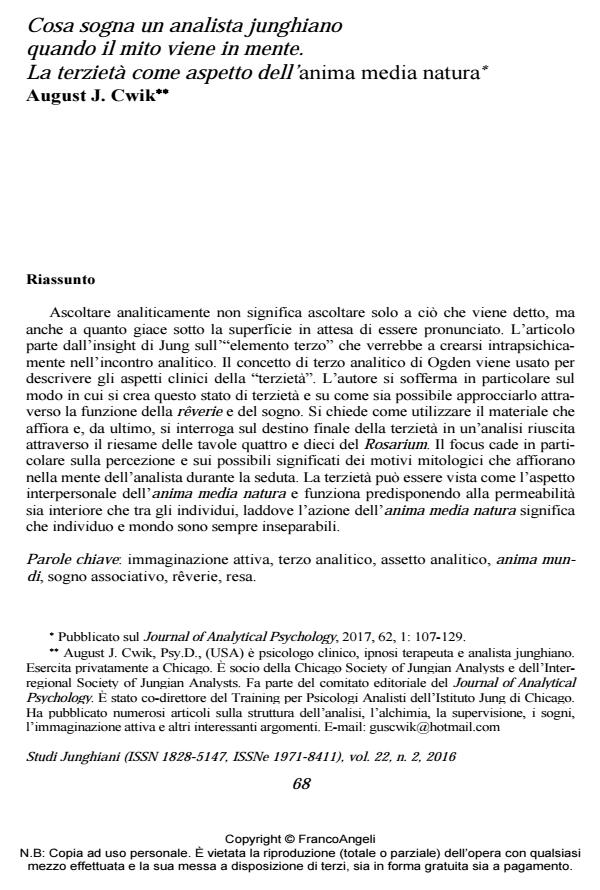What is a Jungian analyst dreaming when myth come to mind? Thirdness as an aspect of the anima media natura
Journal title STUDI JUNGHIANI
Author/s August J. Cwik
Publishing Year 2017 Issue 2016/44
Language Italian Pages 22 P. 68-89 File size 411 KB
DOI 10.3280/JUN2016-044006
DOI is like a bar code for intellectual property: to have more infomation
click here
Below, you can see the article first page
If you want to buy this article in PDF format, you can do it, following the instructions to buy download credits

FrancoAngeli is member of Publishers International Linking Association, Inc (PILA), a not-for-profit association which run the CrossRef service enabling links to and from online scholarly content.
Listening analytically is not listening just to what is said but listening to what is just below the surface waiting to be said. This paper looks at Jung’s insight into a ‘third thing’ being created intra-psychically and within the analytic encounter. Ogden’s concept of an "analytic third" is used to describe the clinical aspects of this thirdness. This paper explores: how the state of thirdness is created and accessed through use of reverie and associative dreaming; how the material emerging from it is used in a from or about manner; and the eventual fate of the third in a successful analysis by a re-examination of plates four and ten of the Rosarium. The focus is particularly on the awareness and possible meanings of mythological motifs appearing in the mind of the analyst while in session. Thirdness can be viewed as the interpersonal aspect of the anima media natura and functions in a way that informs us of permeability in and between individuals, while the operation of the anima mundi means that there is always an inseparability of the individual with the world.
Keywords: Active imagination, analytic mindfulness, analytic third, anima mundi, associative dreaming, rêverie, surrender.
August J. Cwik, Cosa sogna un analista junghiano quando il mito viene in mente. La terzietà come aspetto dell’anima media natura in "STUDI JUNGHIANI" 44/2016, pp 68-89, DOI: 10.3280/JUN2016-044006